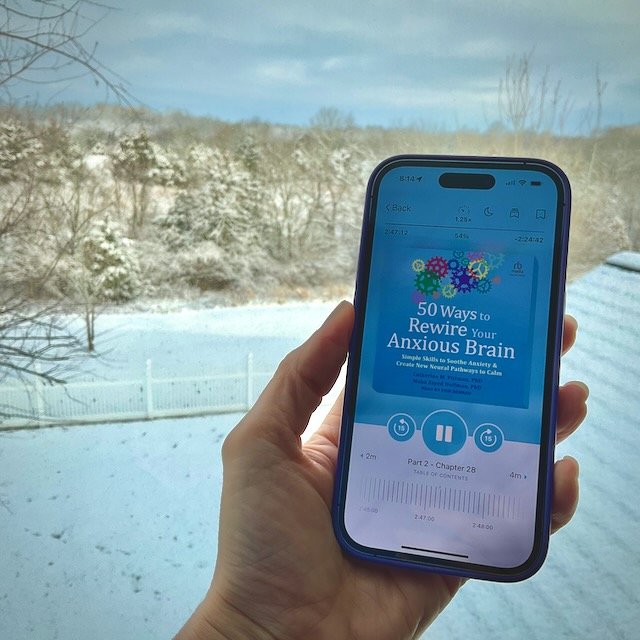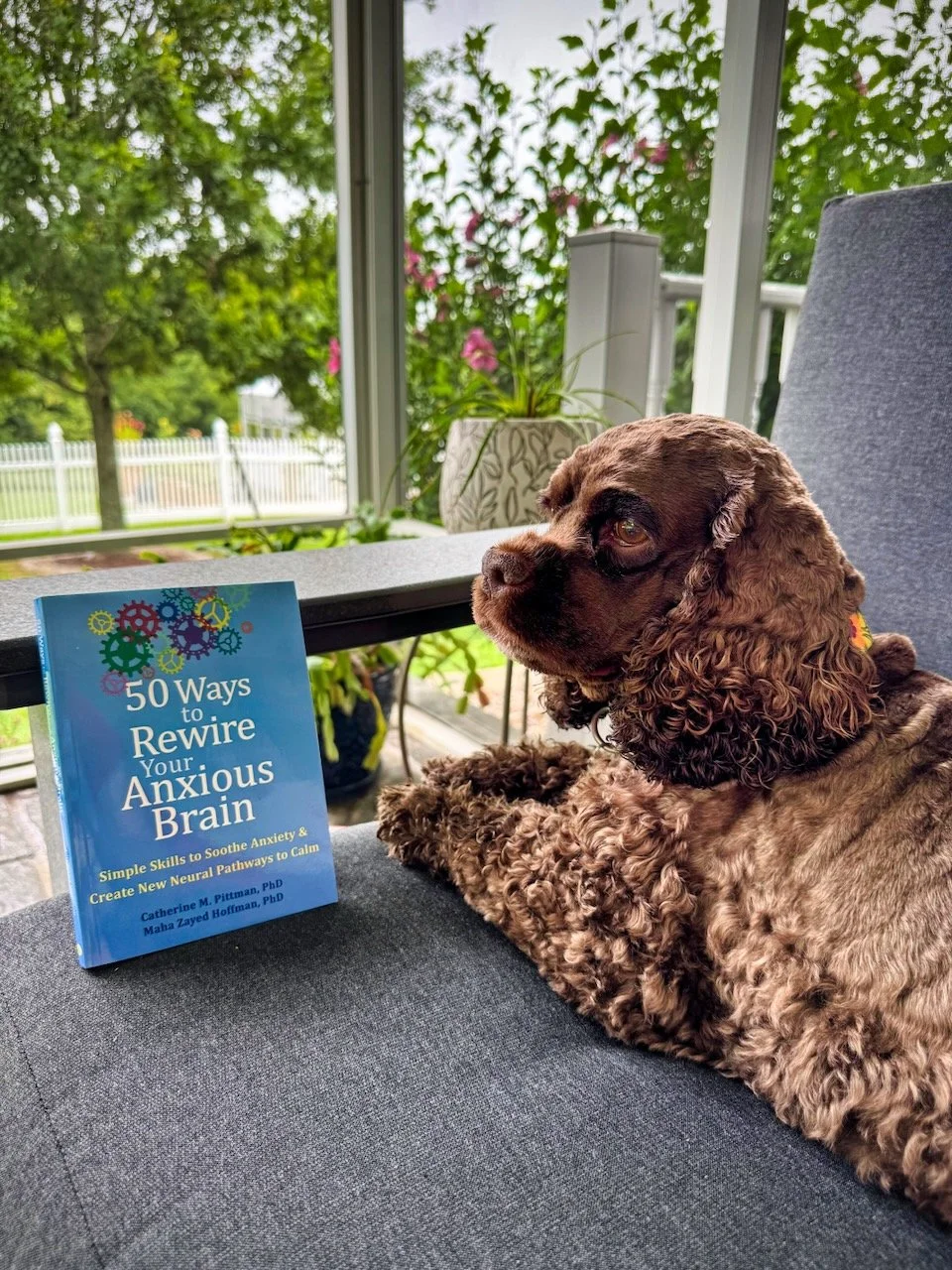50 Ways to Rewire Your Anxious Brain (by Catherine M. Pittman & Maha Zayed Hoffman)
Anxiety is such a common physical and emotional experience for humans to experience in today’s society. I hear clients complain about it multiple times a day. The more I grow in age and maturity, I am gaining an understanding of my own relationship with anxiety. I remain open to learning more coping skills for anxiety. Which brings me to this amazing book, 50 Ways to Rewire Your Anxious Brain: Simple Skills to Soothe Anxiety and Create New Neural Pathways to Calm by Catherine M. Pittman and Maha Zayed Hoffman.
First, I chose to read the audiobook version. The book offers many opportunities for guided journaling through reflection. I listen to audiobooks when I’m on the go or completing household tasks. Not exactly the ideal scenario for stopping the audiobook to journal. I wasn’t interested in pulling over to the side of the road to put pen to paper. I like to journal, but I didn’t feel compelled to journal as offered by the authors. I recommend a physical copy of the book if you want to go through the book slowly, with undivided attention, and opportunities to journal.
I am considering purchasing a physical copy of this book to use as a reference. The authors offer excellent tools that I would love to flip through the book in the future for a refresher. I’m sure I’ll need it!
I appreciate the authors explaining how anxiety works in the brain. They explain, in easy to understand language, how the amygdala works to create anxiety. I like thinking about the amygdala as a part of my brain that is separate from me as a person. This is my personal takeaway from the book based upon how the concept was explained. It gives me the perception that it is something I can combat.
The authors offer so many helpful suggestions. Many I am familiar, such as having good sleep hygiene, mindfulness, replacing anxious thoughts, and evaluating what you have control. What makes their suggestions stand apart from other resources I have utilized is the authors explain how the amygdala works; therefore, how the tool will work on the amygdala. For me, understanding how the brain works makes all the difference in applying their suggestions.
I borrowed the audiobook from my local library with the Libby app. Narration by Erin deWard was just okay; sometimes her voice sounded robotic. Thankfully, it wasn’t so annoying that I couldn’t listen to the book.
March 5, 2024 - UPDATE! I purchased a physical copy of the book! After experiencing a rather stressful and anxiety provoking event, I decided a physical copy of the book would be beneficial to use as a reference and be able to spend more time absorbing the content.
August 29, 2025 - Another Update! My amygdala began behaving in an unruly manner when a couple of stressful events occurred. I was tired of how anxiety consumed me and how quickly it took over. I realized I wasn’t using any of the tools in this book, so I decided to reread my physical copy. While I couldn’t control stressful events, I could control how I responded to them.
I took my time with this reread, which was easier with a physical book than with the audiobook format. Initially, I read one chapter a day, giving myself time to understand and apply the tool. This was a good approach, but I became impatient and wanted to use more than one tool a day, especially when some chapters overlapped. For example, gratitude was mentioned several times with slightly different applications. So, I adjusted my plan to read three chapters a day. I still didn’t use the journaling prompts, but I made time to sit in contemplation.
Speaking of gratitude, I’m grateful for rereading this book. It helped me reestablish a more grounded mind and understand my responses to anxiety-provoking situations. It also reminded me how ornery and helpful the amygdala can be. I had three opportunities to respond calmly and thoughtfully when I encountered wild animals on my hiking trail. During three separate hikes, I met an opossum, two raccoons, and a snake. Normally, my trail is quiet, and I’m lucky to encounter deer, which is more to my liking. The tools I learned in the book not only helped me interact with these creatures, but they also helped me get back on the trail the next day, where I could enjoy nature without fear or anxiety.
The tools have been applicable to my daily life. It seems like something pops up on a daily basis where I can apply these helpful techniques, whether it’s traveling, dealing with an illness, or worrying about random things.
As a participant in the Amazon Associates Program, I earn from qualifying purchases linked back to Amazon. Every penny earned allows me to blog about books and keeps this site running.




